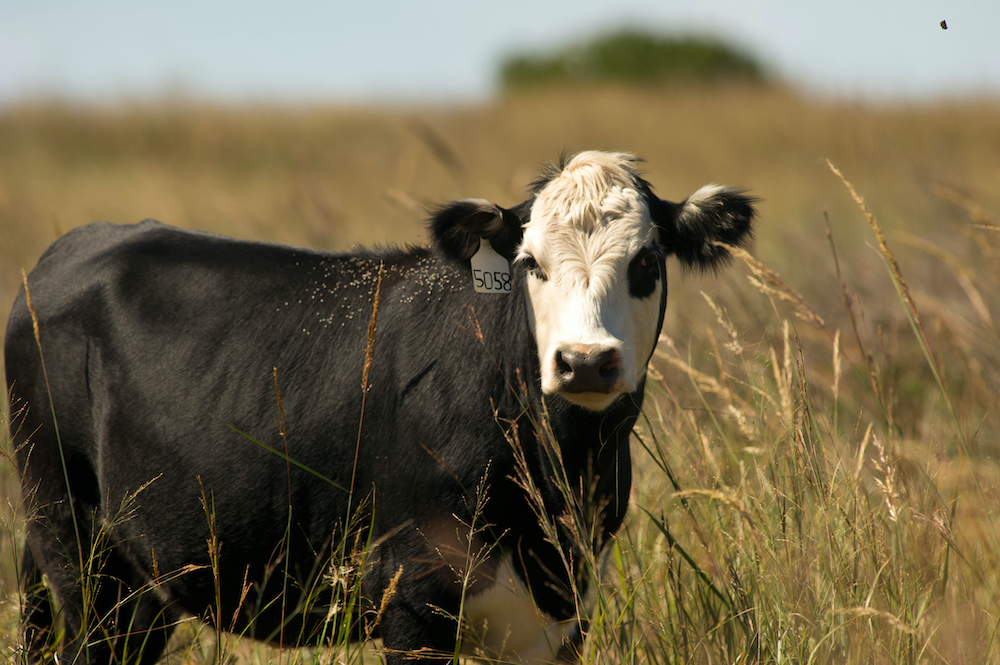
Agricultural News
OSU's Mark Johnson Provides Tips for Managing Heat Stress in Cow-Calf Operations
Wed, 22 Jun 2022 10:08:15 CDT
 This week, Mark Johnson, Extension Beef Cattle Breeding Specialist at Oklahoma State University offers his cattle breeding expertise. This is a part of the weekly series known as the "Cow-Calf Corner" published electronically by Paul Beck. Today, Johnson talks about heat stress.
This week, Mark Johnson, Extension Beef Cattle Breeding Specialist at Oklahoma State University offers his cattle breeding expertise. This is a part of the weekly series known as the "Cow-Calf Corner" published electronically by Paul Beck. Today, Johnson talks about heat stress.
Heat stress is caused by a combination of environmental factors including temperature, relative humidity, solar radiation, air movement and precipitation. During the summer we need to assess the heat stress that cattle are under. Cattle on pasture are not as susceptible to heat stress as feedlot cattle because they have the ability to seek shade, water and air movement to cool themselves. In addition, radiant heat from dirt or concrete surface is increased for feedlot cattle. At temperatures above 80 degrees Fahrenheit cattle can endure physiologic stress trying to deal with their heat load. Although cattle at this temperature are not at risk of dying they will have an increased maintenance requirement to cope with the heat.
Compared to other animals, cattle can't dissipate their heat load very effectively. Cattle do not sweat effectively and rely on respiration to cool themselves. A compounding factor on top of climatic conditions is the fermentation process within the rumen generates additional heat that cattle need to dissipate. Heat production from feed intake peaks 4 to 6 hours after feeding.
Since cattle do not dissipate heat effectively they accumulate a heat load during the day and dissipate heat at night when it is cooler. Any time the Temperature-Humidity Index (THI) is above 80 cattle will be under heat stress. Hot weather following precipitation can increase the THI dramatically. Just as importantly, when overnight temperatures are above 70 degrees Fahrenheit cattle will have increased heat stress. During extreme weather conditions with insufficient environmental cooling at night cattle will accumulate heat that they cannot disperse. Therefore, a temperature-humidity index (THI) alone may not predict cattle heat stress because it does not account for accumulated heat load. Another short fall of THI is that it does not account for solar radiation and wind speed which can affect heat load of cattle. During times of increased heat stress cattle should be observed closely to identify if additional strategies need to be implemented. Initially feed intake will drop off and cattle become restless. As heat stress increases cattle will begin to slobber and respiration rates will increase. Eventually, cattle will begin to group together. In severe heat stress cattle will be open mouth breathing with a labored effort.
Actions to Minimize Heat Stress
- In the summer months, cattle should be worked only early in the morning. Working and handling cattle will elevate their body temperature and cattle should not wait in processing areas longer than 30 minutes when it is hot. Do not work cattle in the evening, even if it has cooled off, it is not recommended. Cattle's core temperature peaks 2 hours after peak environmental temperature. It also takes at least 6 hours for cattle to dissipate their heat load. Therefore, if peak temperature occurred at 4:00 pm cattle will not have recovered from that heat load until after 12:00 am and it will be later than that before cattle have fully recovered from the entire days heat load.
- Provide ample amounts of cool water. The water requirements of cattle increase during heat stress. Cattle lose water from increased respiration and perspiration. Additionally, consumption of water is the quickest method for cattle to reduce their core body temperature. Rule of thumb is that cattle need 3 inches of linear water space per head during the summer. Extra water tanks should be introduced prior to extreme heat events so that cattle become accustomed to them. Multiple cattle need to be able to drink at the same time. Waterers need to be kept clean and cool. Water intake actually decreases when water temperature exceeds 80 degrees Fahrenheit. Ideally water sources should not be exposed directly to the sun.
- Shade is critical, especially for black cattle. To be effective there needs to be 20 to 40 square feet of shade per animal. If using a mechanical shade structure, an east-west orientation will permit the ground under the shade will remain cooler. However, if mud is an issue then a north-south orientation will increase drying as the shade moves across the ground during the day. The height of the shade structure should be greater than 8 feet tall to allow sufficient air movement under the shade.
- Increasing the air flow can help cattle cope with extreme heat events. Wind speed has been shown to be associated with ability of cattle to regulate their heat load. Although we cannot influence wind speed we can ensure that there are no restrictions to air movement such as hay storage, tall vegetation or wind breaks.
- Control flies. Biting flies cause cattle to bunch up which decreases cooling. Minimizing breeding areas for flies and applying insecticides to decrease fly populations prior to heat stress is a valuable management practice.
- The USDA-ARS and NOAA forecasts heat stress that cattlemen can use to make management decisions at https://www.ars.usda.gov/plains-area/clay-center-ne/marc/docs/heat-stress/main/
WebReadyTM Powered by WireReady® NSI
Top Agricultural News
More Headlines...




